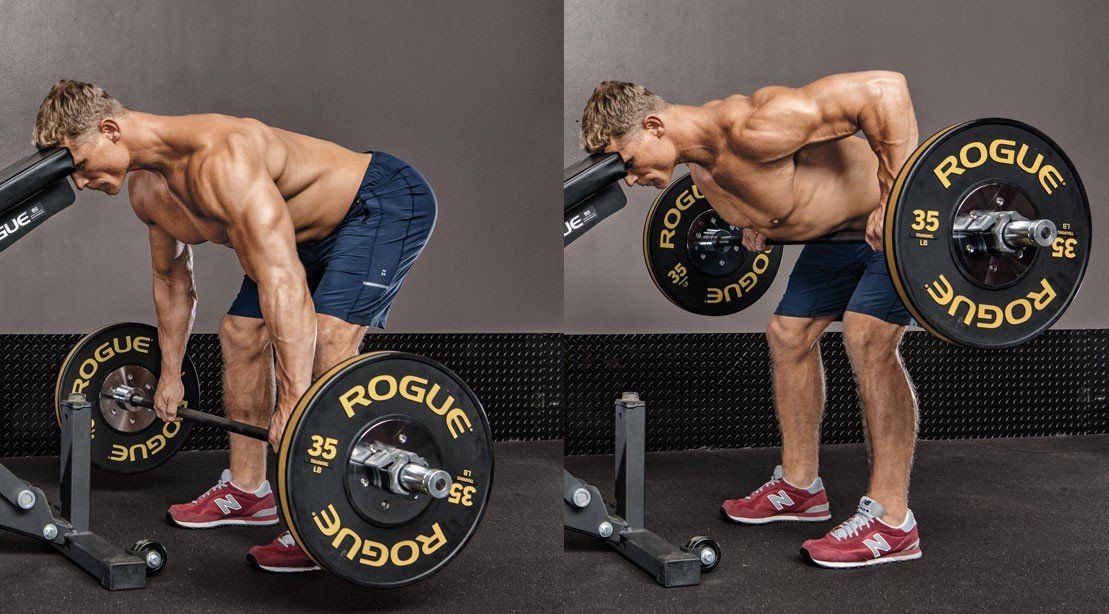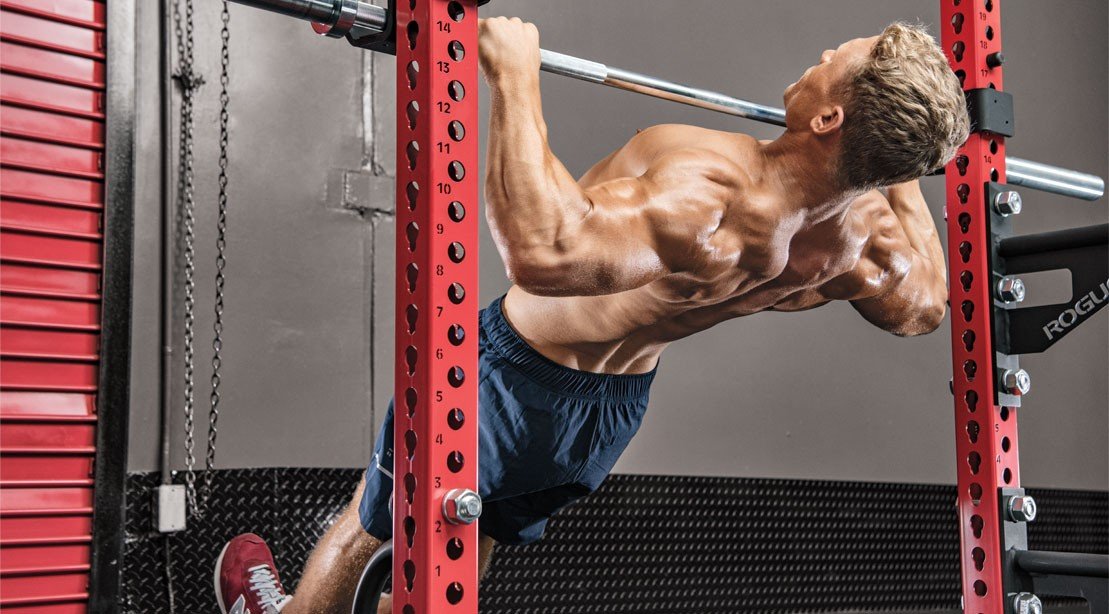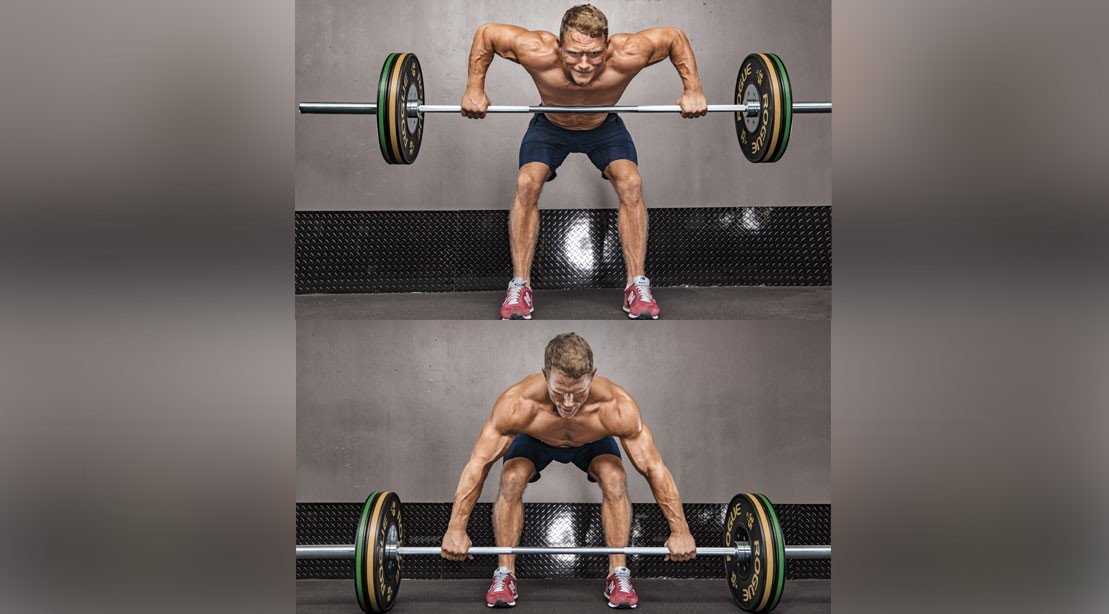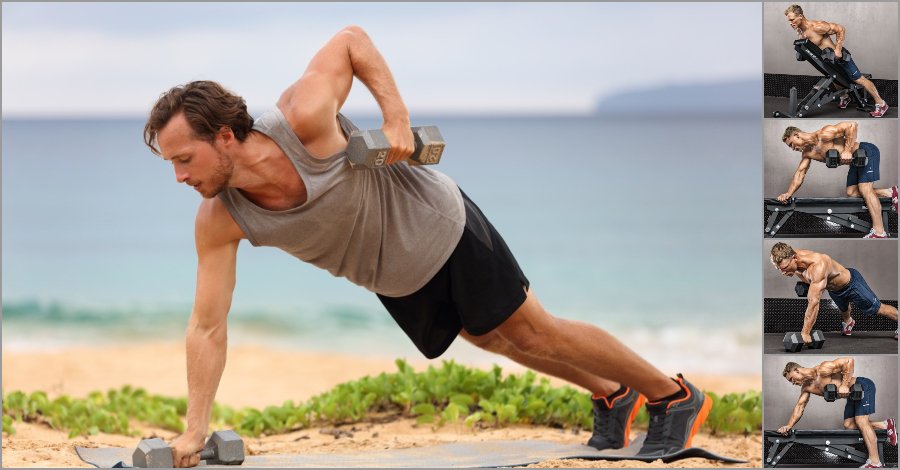What’s the best big lift you can do for the upper body? If your gut reaction says either bench press or military press, perhaps you need to start focusing a bit more on pulling than pushing.
Truth is, the classic barbell row will give any upper-body exercise a run for its money in terms of developing pure strength and piles of muscle. In fact, upper-body pulling movements should be prioritised over presses in your workout.
Chances are, your shoulders are hunched at least slightly forward due to press-happy nature in the gym, plus all the posture-destroying daily movements people do, which set the shoulders even farther forward.
If rows aren’t a focal point of your training, it’s time they become one. Use any of these six variations for a bigger, broader, stronger back.
1. Prone Incline Dumbbell Bench Row
Lying face-down on an incline bench while rowing maximises isolation, because you don’t have to worry about how your legs are positioned, if your knees are bent, etc. Lying face-down on a standard flat bench wouldn’t provide nearly enough clearance to the floor to allow for full extension of the arms.

How to:
- Lie face-down on an incline bench with your feet on the floor, holding a pair of dumbbells.
- Begin with your arms hanging straight toward the floor, palms facing each other and elbows fully extended.
- Contract your back muscles and lead with your elbows to pull the dumbbells straight up.
- When they reach your midsection, squeeze your shoulder blades together for a one count, then slowly lower the weights to the start position.
2. Head-Supported Barbell Bent over Row
For many people, heavy bent over rows put undue strain on the lower back. That’s where this “head-supported” version comes into play; instead of your lower back taking the full burden of stabilising your torso, an adjustable bench takes much of the tension off.

How to:
- Stand holding a barbell with a shoulder-width, overhand grip in front of an adjustable incline bench facing away from you.
- Bend over at your waist until your torso is about 45 degrees to the floor, and place your forehead firmly on the top of the seat back.
- Contract your back muscles to pull the bar up to your stomach, keeping your torso in the same position and your forehead on the bench throughout.
- Feel the contraction at the top, then slowly lower the bar back to the arms-extended position.
3. Inverted Row
It’s a challenging body-weight move that enhances pulling strength while helping build thickness in the middle back. And they’re easy to scale—make them easier by bending your knees with your feet flat on the floor, or you can make the move harder by elevating your feet on a bench or box.

How to:
- Set the bar of a Smith machine (or TRX straps, whichever you prefer or have available) to about hip height.
- Lie face-up underneath the bar and grasp it with a shoulder-width overhand grip.
- Place the backs of your heels on the floor and start with your arms fully extended and your body in a stiff plank.
- Contract your back muscles to pull yourself up to the bar until your chest touches it, staying rigid throughout, then lower yourself down under control back to full extension.
4. Pendlay Row
This move— which has you row the weight from a dead stop off the ground—is great for adding thickness to the back and boosting deadlift performance, as it increases your power production. Also, because the bar starts on the floor for each rep.

How to:
- Stand in front of a barbell sitting on the floor, and bend over and grasp it just outside shoulder width.
- In the start position, the knees are bent and the back is flat and parallel with the floor.
- Pull the bar off the floor and up to your midsection without lifting your torso or extending your knees.
- When the bar touches your midsection, slowly lower it back to the floor, letting it rest momentarily before the next rep.
5. Renegade Row
You won’t be able to go as heavy on renegade rows as you would with other rowing variations, but the added benefits are worth it—namely, increased core strength and shoulder stability (from your down arm holding your body steady while the other pulls weight).

How to:
- Start in a push-up position with your hands holding a pair of dumbbells resting shoulder-width apart on the floor, palms facing each other.
- Row one dumbbell to your side without letting your torso rotate as you do so—keep your chest facing downward.
- Lower the dumbbell back to the floor, then repeat with the other arm.
- Alternate arms until you complete all the reps.
6. One-Arm Dumbbell Row
The key here is isolation. Not only will the dumbbell provide maximum range of motion, but pulling with one arm at a time better allows you to focus on and bring up the weaker side if you have an imbalance issue. Plus, because you’re using the bench for support, you don’t have to be as mindful of torso position as with standing rows.

How to:
- Place one bent knee and same-side hand on a flat bench with the opposite foot on the floor and that hand holding a dumbbell.
- Keeping your chest pointed to the floor and with your head straight, pull the dumbbell up to your waist by contracting your back muscles and bending your elbow.
- When it reaches the top, squeeze your shoulder blades together, then slowly lower the dumbbell to the start position.
- Complete all reps with one arm, then switch arms.

